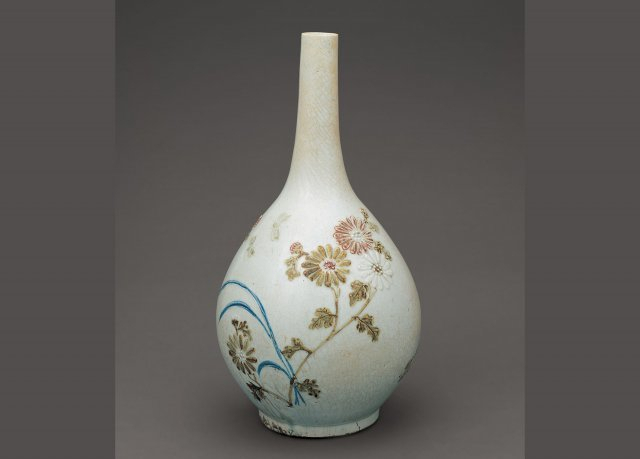Book tells epic stories, illustrations of national treasures
By Kim Hae-yeonPublished : Feb. 14, 2023 - 14:53

The National Research Institute of Cultural Heritage has published a book on the nation's artifacts, unraveling behind-the-scenes stories that have been found in the research process, the state-run institute announced Monday.
Titled "Encountering Relics," the 214-page book focuses on detailed records, images and relevant materials of a total of 13 state-designated national treasures and treasures that have been selected and studied by the institute for research and preservation purposes from 2017 to 2022.
Among them is the story behind the discovery of the white porcelain bottle with grass and insect design in underglaze iron, copper, and cobalt blue, designated a national treasure in 1997.
According to the book, during the 1920s, an old lady living near Paldang, Gyeonggi Province, found a white bottle while harvesting vegetables in the fields.
The lady bottled sesame oil and sold it for 1 won. The husband of a woman who had bought the oil bottle happened to be a Japanese antique dealer, who recognized that it was a Joseon white porcelain, and sold it to another antique dealer at 60 won.
In 1936, the bottle was sold for 14,580 won at an auction held after several collectors. The person who purchased the bottle was Jeon Hyung-pil (1906-1962), a cultural artifacts collector and founder of Korea's first private art museum Bohwagak, today's Kan Song Art Museum. The Cultural Heritage Administration’s studies note that the bottle was produced in Gwangju in Gyeonggi Province, around the early 18th century.
The book also contains stories during the Korean War when families struggled to protect their ancestors' portraits, and other historical incidents that led to preserving the nation’s relics we see today. Firsthand experiences and impressions of such artifacts encountered by researchers at the institute are also written in detail.
The book will be distributed to universities, temples, libraries and museums that work to support, and study the cultural heritage. Online version can be found at the NRICH's information portal website.



















![[Today’s K-pop] Treasure to publish magazine for debut anniversary](http://res.heraldm.com/phpwas/restmb_idxmake.php?idx=642&simg=/content/image/2024/07/26/20240726050551_0.jpg&u=)